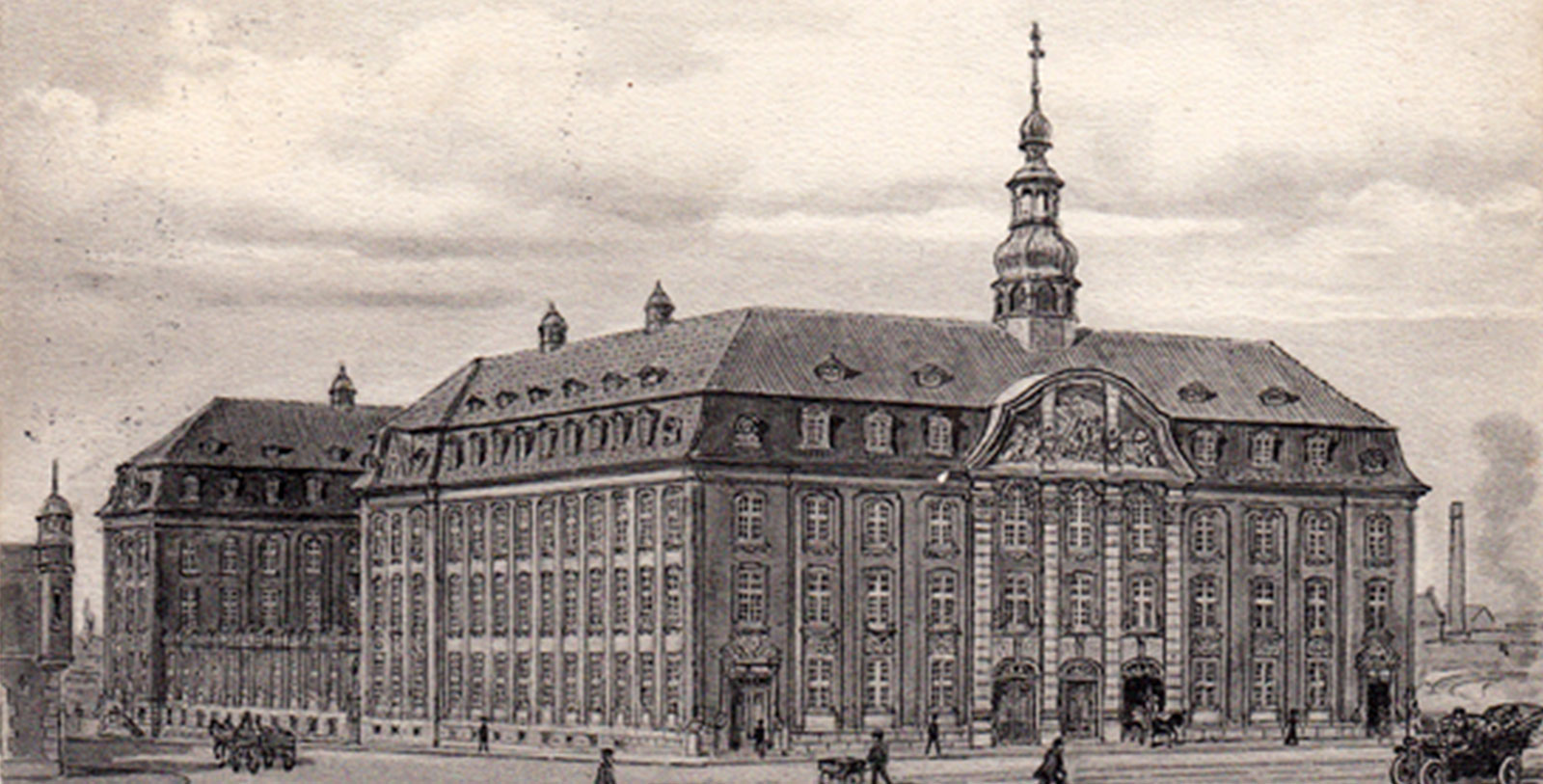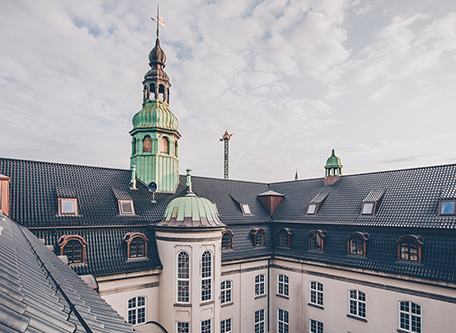Receive for Free - Discover & Explore eNewsletter monthly with advance notice of special offers, packages, and insider savings from 10% - 30% off Best Available Rates at selected hotels.
history
Discover the Villa Copenhagen, which spent more than a century operating as the Central Post & Telegraph Head Office.
Villa Copenhagen, a member of Historic Hotels Worldwide since 2019, dates back to 1912.
VIEW TIMELINEVilla Copenhagen is among of Denmark’s most celebrated holiday destinations. Yet, this magnificent historical building has not always been a fabulous vacation getaway. Indeed, Villa Copenhagen spent many years as the Danish Central Post & Telegraph Head Office. Also known as the “Copenhagen Central Post Building,” the structure specifically served as the home of the Danish Post Office (otherwise known as Post Denmark A/S) for more than a century. The Danish Post Office itself can trace its direct roots all the way back to 1624, when King Christian IV issued the “Royal Ordinance on Postmen.” His decree effectively established an actual postal service for the nation, funding the delivery of mail along nine select routes. The most essential route connected Copenhagen—the capital—with the nearby German merchant city of Hamburg. Originally, the king appointed the head postmaster to serve at a building called the “Børsen” for two hours each day, handling both the post, as well as all the office’s administrative affairs. The main postmaster presided over a vast network of mailmen, who often spent their careers on the road as they delivered all kinds of official correspondence. Interestingly, the Danish Post Office operated as if it were a private company, with merchants even supervising it at their own expense in some cases. Nevertheless, the organization continued to grow, before finally getting taken over by the state in 1711. The Post Office thus started to function more like an official government agency, as the profits were used to bolster both the organization itself and its employees.
During the late 18th-century, the Danish Post Office had become a fixture throughout the Kingdom of Denmark. Its influence was great, as it controlled the spread of information across the country. Newspapers, in particular, emerged as one of the most important pieces of mail it distributed, as thousands of Danes began subscribing to those publications in great numbers. As such, the sheer amount of postage that the Danish Post Office managed on a regular basis seemingly exploded over night. The government subsequently began to create official sorting houses for the agency to use, as a way of controlling the potential chaos. It subsequently commissioned the creation of one such sorting house in Copenhagen’s neighborhood of Købmagergade in 1799. But as modern technology enhanced the organization’s ability to distribute the mail more easily, the sorting house in Købmagergade became too small. By 1900, the Danish government realized that it needed a much larger edifice to help the Danish Post Office manage the mail. It thus commissioned the creation of a new building to fulfill such a purpose. The government hired the renowned Heinrich Wenck to spearhead the design. Wenck himself was an accomplished architect who had spent years crafting various blueprints for Danish State Railways. Among the most noteworthy structures that Wenck had crafted at that point included the Helsingør Station and the Copenhagen Central Station (which was still under development at the time).
Even though it took Wenck nearly a decade to create the structure, it proved to be well worth the wait. His plans called for the creation of a stunning four-story structure that featured only the best elements of Baroque Revival-style architecture, making the building’s brilliant façade a dominant part of the local skyline. Construction began in earnest in 1909, and concluded some three years later. The Danish Post Office eagerly moved into its new sorting house, calling it the “Central Post & Telegraph Head Office.” But despite its pride in the building, the organization eventually outgrew the location at the beginning of the 21st century. In 2017, a hospitality company called “Nordic Choice Hotels” decided to buy the vacated administrative building with the intent on converting it into a wonderful boutique hotel. An affiliate of Choice Hotels International, Nordic Choice Hotels invested millions into the transformation of the Central Post & Telegraph Head Office. Yet, the work also endeavored to preserve the building’s rich architectural character. Taking the better part of three years to complete, construction concluded in 2019 with a target opening date of 2020. When the building finally debuted as the “Villa Copenhagen,” it stood as one of the most spectacular destinations in all of Denmark. Now a member of Historic Hotels Worldwide, the historic Villa Copenhagen offers an experience that every guest is sure to love.
-
About the Location +
Villa Copenhagen resides in Vesterbro, which is one of Copenhagen’s most desirable neighborhoods. Located just beyond the city’s historic downtown core, Vesterbro literally translates as “Western Bridge” in English. The locale is called “Vesterbro” due to the fact that it was close to the mighty western bridge that led into Copenhagen for centuries. The western bridge was one of four major routes into the city, with the other three being the “Østerport,” the “Nørreport,” and the “Amagerport.” Copenhagen itself is the capital of Denmark, as well as one of Europe’s most historic communities. While no clear record exists of its exact founding date, the earliest known references to the city date to the High Middle Ages. At the time, Copenhagen was just a small isolated fishing village. Bearing little strategic or political relevance at the time, the town remained relatively undeveloped with its people catching herring in the surrounding Øresund. But Copenhagen also doubled as a coastal outposts of sorts, giving various bands of Vikings an opportune place from which to launch their maritime raids across the North Sea. As the Viking Age died off toward the end of the 1000s, Copenhagen evolved into a prominent marketing town that serviced merchants from all over Scandinavia. Eventually, Bishop Absalon of Roskilde constructed an imposing castle and reinforced the entire town with a ring of fortifications. The priest had received the area as a gift from King Valdemar I of Denmark, due to his service to the Danish Crown. Absalon’s embattlements were meant to serve as a deterrent against local pirates, who had ravaged the shoreline for years. But the pirates eventually destroyed the citadel, forcing the residents to erect a new fortress that they called “Copenhagen Castle.”
As Copenhagen continued to grow in economic importance, it drew the ire of the Hanseatic League in nearby Hamburg. The merchants in Hamburg repeatedly attacked the settlement, culminating with the Second Danish-Hanseatic League War in 1368. Successfully resisting the continuous assaults of the Hanseatic League, Copenhagen established its place as one of the continent’s preeminent centers for trade. In 1397, Queen Margrethe I married the Norwegian king, Hakon Magnusson, thus unifying the realms of Denmark, Sweden, and Norway together into one realm. Her chosen successor, Eric of Pomerania, selected Copenhagen Castle as his seat of power, which made the community the capital of the entire domain. Afterward, Copenhagen was eventually designated the permanent residence of the Danish Royal Family. Copenhagen had also become a burgeoning metropolis, as its proximity in Northern Europe gave it access to power and wealth. The city specifically benefited from increased trade with the Dutch, as well as many other nations that lined the nearby Baltic Sea. Countless warehouses and wharves appeared within Copenhagen, in addition to a vibrant financial industry headlined by the Børsen—Denmark’s stock exchange. Copenhagen truly came into its own as a continental superpower during the reign of Christian IV. The monarch took a special interest in developing the city’s financial might, as well as enhancing its infrastructure. He sponsored many prominent building projects that led to the construction of such impressive edifices like Rosenberg Castle and the Round Tower. Christian IV also commissioned the creation of a fortified trading district called the “Christianshavn,” which eventually emerged as the economic heart of the city.
Copenhagen’s continental power waned in the 18th century after a combination of plagues and fires greatly devastated the local population. But Copenhagen endured, nevertheless, evidenced by the dozens of outstanding landmarks that opened within its limits. The first to appear was the spectacular Christiansborg Palace, which replaced the previous Copenhagen Castle as the home of the Danish monarchs. Then, in 1749, all of the famous Rococo-inspired buildings within the district of Frederiksstaden made their glorious debut. Both the Royal Theatre and the Royal Academy of Fine Arts opened toward the middle of the century, as well, marking Copenhagen’s transformation into a rich cultural center. Denmark’s neutrality from the European conflicts of the age aided in the city’s rebirth after its series of earlier setbacks. But the Napoleonic Wars of the following 19th century were not as kind. Seeing Denmark’s alliance to Russin, Prussia, and a few other nations as problematic, the British Royal Navy attacked the city in what became known as the “Battle of Copenhagen.” The two sides eventually called a truce, although it ended with the Second Battle of Copenhagen in 1807. The Napoleonic Wars were a disaster to the Danes, as the whole country faced bankruptcy. Fortunately, Copenhagen and the rest of Denmark were able to recover brilliantly, with the kingdom becoming a democratic nation in 1847. Copenhagen remained the capital, serving as the home to the Danish Parliament (otherwise known as the Folketing). Today, Copenhagen is one of Europe’s most celebrated cities. It continues to operate as one of the major financial centers for Northern Europe, and is the place of business for many prominent companies in the pharmaceutical, clean energy, and technology industries.
-
About the Architecture +
When architect Heinrich Wenck first started designing the Villa Copenhagen while it was the Central Post & Telegraph Head Office, he used Baroque Revival-style architecture as the source of his inspiration. Also known by the name of “Second Empire” in France—where it originated—Baroque Revival-style architecture merely imitated some of the design principles of the original Baroque art form of the Early Modern period. Baroque Revival architecture was specifically meant for larger structures that could easily showcase its ornate features and grandiose materials. Architects, business owners and other professionals who embraced the form believed that it represented the best of modernity and human progress. The form looked similar to the equally popular Italianate-style, in which it embraced an asymmetrical floor plan that was rooted to either a “U” or “L” shaped foundation. The buildings usually stood two to three stories, although some commercial structures—like hotels—exceeded that threshold. Large ornate windows proliferated across the facade, while a brilliant warp-around porch occasionally functioned as the main entry point. The porches would also have several outstanding columns, designed to appear smooth in appearance. Every window and doorway featured decorative brackets that typically sat underneath lavish cornices and overhanging eaves. Gorgeous towers known and cupolas typically resided toward the top of the building, too. Yet, Baroque Revival architecture broke from Italianate in one major way—the appearance of the roof. Architects always incorporated a mansard-style roof onto the building, which consisted of a four-sided, gambrel-style structure that was divided among two different slopes. Set at a much longer, steeper angle than the first, the second slope often contained many beautiful dormer windows. The mansard roof became a central component to Baroque Revival architecture after Georges-Eugène Haussmann and his fellow French architects starting using it for their own designs. They had specifically sought to copy the mansard roof of The Louvre, which the renowned François Mansart had created back at the height of the French Renaissance.


























